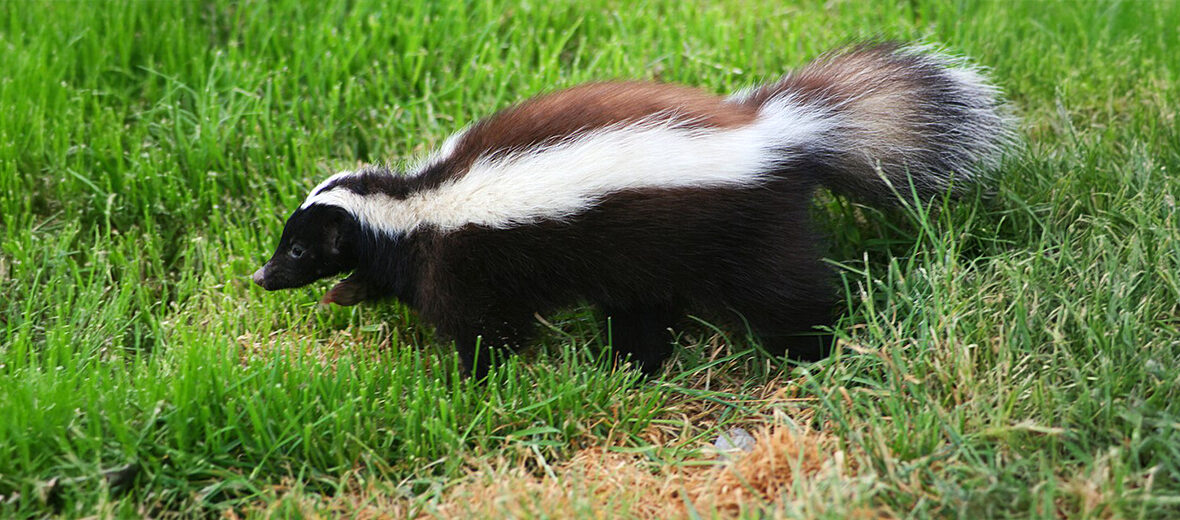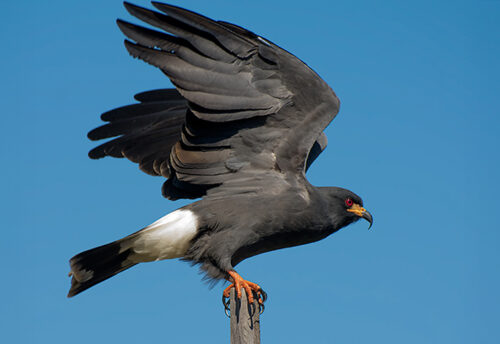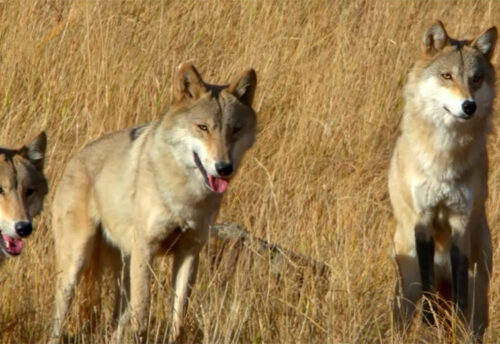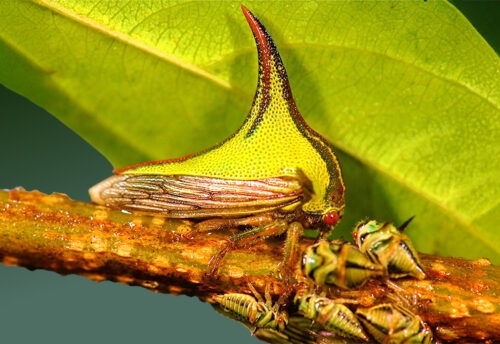
The Humboldt’s hog-nosed skunk, aka Patagonian hog-nosed skunk, hails from the open grassy areas in the Patagonian regions of South Argentina and Chile, in South America. These skunks face the threats of hunting and trapping for their pelts. Their pelts were exported a great deal between 1960 – 1980. They are also still extensively utilized in the exotic pet trade. However, they are abundant enough to be listed as Least Concern by the IUCN. Their population trend is listed as stable.
First the Stats…
Scientific name: Conepatus humboldtii
Weight: Up to 6.61 lbs.
Length: Up to 13.39 inches, plus up to a 8.27 inch tail
Lifespan: Up to 14 years
Now on to the Facts!
1.) These skunks are diminutive, have a stocky build, and an elongated nose evolved to better search for food.
2.) They feast on beetles, crickets, grasshoppers, mice, rats, fruit, and carrion (dead animals).
3.) Culpeos, chilla foxes, Geoffroy’s cats, pampas cats, Andean cats, and mountain lions all prey on these skunks.
4.) Humboldt’s hog-nosed skunks are crepuscular (active at dawn and dusk).
5.) Discarding any real hunting tactics, these skunks tend to go after prey that is the easiest to catch.
But wait, there’s more on the Humboldt’s hog-nosed skunk!
6.) They were first described by John Edward Gray in 1869, who named the skunks in honor of the explorer Alexander von Humboldt.
7.) Females undergo up to a 66 day gestation (pregnancy) that yields up to 7 kits.
Did you know…?
The effects of their spray on humans causes intense burning, redness, and tearing in the eyes, as well as nausea, and lung irritation if inhaled. In pets, heavy exposure, especially in dogs, can lead to serious health problems like temporary blindness, vomiting and, in very rare instances, red blood cell damage resulting in anemia.
8.) Kits remain in their den for up to 2 months before leaving to become independent.
9.) Like other species of skunks, these critters do not hibernate.
10.) A skunk’s spray contains chemicals called thiols and thioacetates, which are sulfur-based compounds. These chemicals are responsible for the powerful, thick, persistent odor and also have a direct chemical effect on tissues and cells, primarily in the eyes.
Now a Short Humboldt’s Hog-Nosed Skunk Video!
This video tells the story of abandoned baby skunks.
Be sure to share & comment below! Also, check out the Critter Science YouTube channel. Videos added regularly!

Want to suggest a critter for me to write about? Let me know here.
Some source material acquired from: Wikipedia & IUCN
Photo credit: payayita



